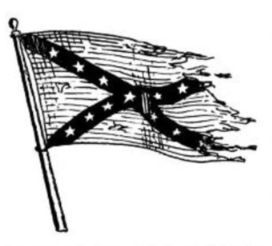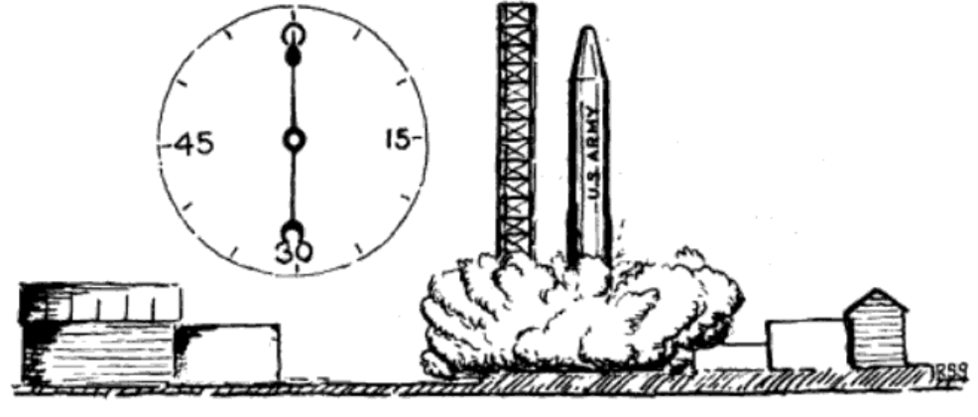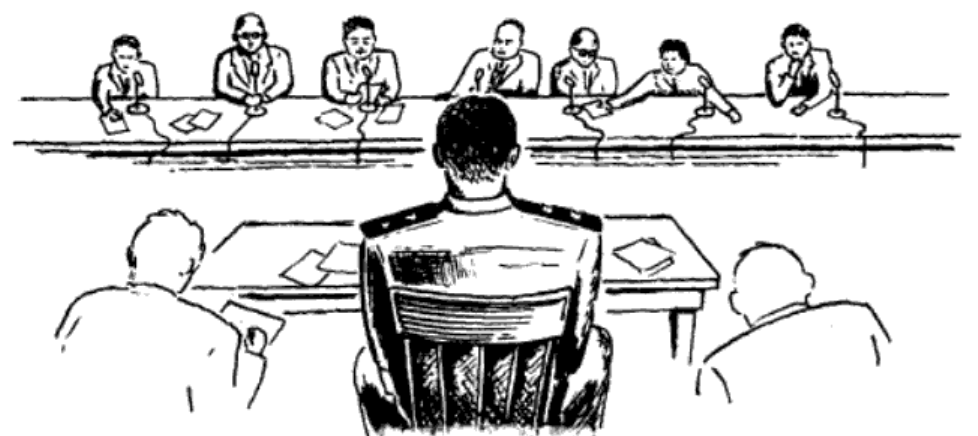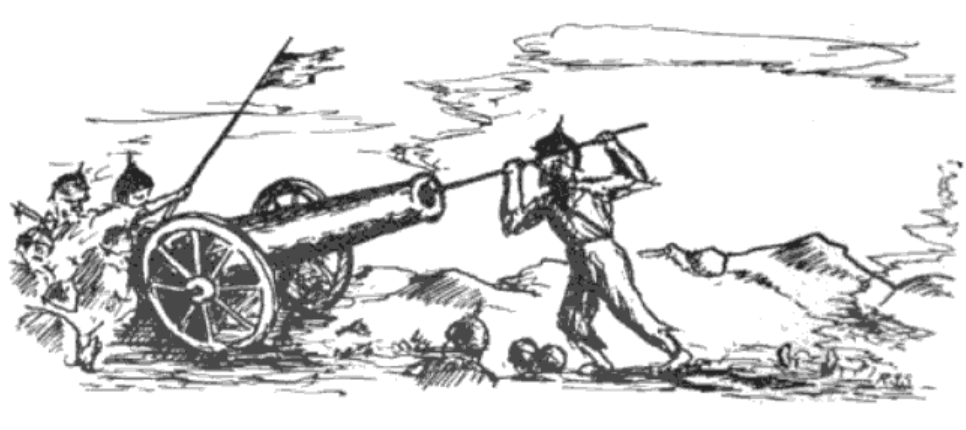Military History as Liberal Education
Perhaps the best way to approach the question which is the subject of this first lecture — the nature of military history — is to tell you what military is not (in my opinion) and what this course will not attempt to do. What it will not use is what I call the West Point method of teaching military history, as a summary of campaign, battles and wars. Now I have no quarrel with that fine institution or with its method of teaching military history — if your aim is to turn out second lieutenants. It does no harm to a young officer candidate to study up on the Battle of Chancellorsville and learn something about the difference between a turning movement and an envelopment, or what is meant by the tactical use of interior lines.
That is one sort of military history — and I has its place and use — but it is not what I mean by military history — it is not the sort of thing that this course is all about. The trouble with old style military history is that it is concerned too much with battles, with strategy and with tactics — it’s what the army likes to call “operational history.” Furthermore, when the army teaches military history, it’s trying to achieve certain purposes that a civilian, like myself, doesn’t want to have anything to do with. One of the aims is indoctrination, to fill the student with pride in the achievements of the army — and it attempts to instill the principle of leadership and make leaders. And then running through their course, as a sort of theme, there is the pet theory of the Army that there are nine eternal principles of war — nine principles which sums up the art of war and which can be used to analyze any battle from Yorktown to the Battle of the Bulge. Know how to use the nine principles and, you too, can b a Hannibal, a Lee or a MacArthur — neglect them and you’ll get clobbered like Burnside at Fredericksburg or Fighting Joe Hooker at Chancellorsville. Now personally — and this is perhaps just a civilian bias of mine — I don’t believe in the principles of war and I think that they hinder your understanding of military affairs more than they help — and I promise that not a single principle of war will ever sneak into this lecture room.
But my main complaint about the ordinary sort of military history — about that kind of military history— is that it is too narrow and too restricted. It deals with military things in a vacuum — you concentrate on tactics, on strategy, on operations as if they were isolate phenomena that weren’t related to anything else in life. What you miss are the important things — the relationship between war and society, the connection between civil affairs and military affairs, how war influences the society we live in, its impact on political institutions, upon economic questions, upon social issues. And it is precisely these things – the broader relationship between military affairs and society — this is what I mean by military history, and this is what History 219 is going to be concerned with. We will concern ourselves with relating the civil to the military aspects of war; we will not be presenting military history as a technical study of battles and campaigns. But it is the aim of Princeton University to turn out liberally educated men and informed citizens, not second lieutenants.
Drum & Trumpet
To show you in more concrete terms what I mean, let me give you a few illustrations based on my own experiences teaching military history to a group of army officers at another university. Last summer I was asked, along with a few other civilian historians, to conduct a special course in military history — said course being taught to a group of army officers. All of these officers, I should add, were members of ROTC units at various colleges in the United States — and they were all instructors in the basic military history course that the ROTC gives in most colleges. Now I must confess I had a perfectly delightful time out of all this — during World War II I never got a higher rank than that of corporal; now I had a captive audience of about thirty captains and majors who had to call me “sir” and whom I could criticize any way I wanted. Well, we quickly discovered that our captains and majors thought military history was just battles, tactics, staples of war. We civilians got fed up with this drum and trumpet approach, so we launched our own counterattack. We’d let the officers get up and tell how they intended to teach the Civil War; for instance, how they would go about teaching the battle of Gettysburg. We’d let them get all set, line up the troops, explain all the various troop movements, criticize Longstreet for his delays and so forth. Then one of us nasty civilians would ask, “Well, major, why did Lee invade the North anyhow?” We’d always get a strictly tactical or operational answer. About this point I’d jump in and argue that maybe Lee went north because the Confederacy wanted to get diplomatic recognition from England and France. I’d point out that Lee and Jefferson Davis figured that a big victory would have an impact in Europe, that England and France would recognize the Confederacy as an independent nation, and that, out of all this, the South would gain its independence. Then I’d argue that the thing to study about Gettysburg wasn’t whether or not Long-street fouled up Lee’s plans but the fact that the importance of the battle was its international ramifications — for when Lee didn’t win, the South lost its last chance to get European recognition. While our officers were digesting this, another civilian teacher would pipe up, to the effect that, “Well, major, what would have happened if Lee had won at Gettysburg?” Of course, again we’d get the tactical, operational answer. But my colleague would reply that Lee couldn’t have done anything, that he would have run out of artillery ammunition, and that — win, lose or draw — he’d have had to head back for Virginia — because he didn’t have any more shells for his guns. And then he’d go on to argue that the important thing to study here was the economic factor — the fact that the South, lacking much in the way of industry, didn’t have a real chance to win against the far more industrialized North, which could turn out artillery shells by the thousands which the South could never hope to match.
Lee at Gettysburg

In general, then, we civilians gave the majors and captains a pretty hard time; we turned thumbs down on their purely operational explanations, and we always tried to get them to look at non-battlefield matters. As a matter of fact the examples we used on Gettysburg weren’t 100% true. The European recognition issue was a lot more important for other battles than it was for Gettysburg — and, another confession, Lee wasn’t really out of ammunition after Gettysburg. But that really isn’t the issue; we were doing all this to try to get the majors and captains to see war in its larger perspective — to see its relation to political and diplomatic questions and, also, to see how political, economic and social matters affect the conduct of war.
So, obviously, it is this sort of issue we’ll be dealing with for the next thirteen weeks. You won’t get much in the way of operations, principles of war, or tactics — but you will get readings and lectures which attempt to relate military history to general history, to show the relation of war to society and of society to war, and the reciprocal relationship between the military and civilian aspects of society.
Moreover, there are certain specific themes which we will follow throughout the course — and, as a sort of check list for your general guidance — let me spell out a few of them.
One is the evolution of warfare itself — how warfare in Western society changed from limited war in the 18th century to total war in the 20th century. And whether or not our society today can find the way to limit war again. One of our major themes will be the concept of practice of total war — the theories on which it is based, the instruments which made it possible.
And in doing this, one of the things I intend to hit upon is the way in which political and social developments affected military developments. For instance, I’m going to try to demonstrate to you tomorrow the ways in which the nature of society in those years, the political conditions of the 18th century — how these things made it impossible for the 18th century to fight anything except limited war. Then next week we’ll move on and consider the impact of the French Revolution — how revolutionary political, social and economic changes in France after 1789 made it possible for the French to wage a more total kind of war, and ultimately made it possible for Napoleon to conquer most of Europe. Then, in considering the 19th century, we’ll consider the many ways in which the Industrial Revolution affected war — the ways in which the industrialization of society made it possible for nations to wage war on a scale hitherto undreamed of. When we come to the Civil War, for instance, I’m going to talk about the ways in which Northern railroads made it possible for the Union to win out.
“Limited” War
And I want to carry this matter of total versus limited war down to the present. For instance, many people — both military and civilian — argue the need for a return to a limited war. We are always being reminded of the terrifying fact that man, at last, has at hand the means of total destruction readily available — and that the only way that we can save society is by finding some way to limit war. This is a proposition which, towards the end of the course, we will want to examine rather closely — asking ourselves, for example, if the political, economic and social conditions of the modern world make this possible — or if it isn’t hopeless nostalgia to keep looking back to previous ages where war could be conducted on a limited basis.
Well, that is one area of problems I intend to hit rather extensively. Another, and more specific issue, is the relationship between civil governments and their military establishments. We will pay a lot of attention, for instance, to the example of Prussia — a country in which the state was created by the army and in which the military establishment was the dominant influence in the government. We will try to find out the consequences for Germany and the world — of the fact that the pattern of civil-military relationships in Germany has generally been one in which the military was dominant over the civilian. Conversely, we will consider the basic Anglo-American pattern — in which the tradition is that of civil supremacy. Now it is easy enough for us in the United States to congratulate ourselves on having escaped from European militarism, for having a form of government in which the civilians are in control. But, in this course we will quickly discover that this simple formula doesn’t always answer everything. In the Civil War, for instance, we’ll encounter a Congressional Committee which hampered and hindered the military operations of the Union Army and whose general attitude toward West Pointers was more hostile than that of Senator McCarthy toward General Zwicker. Moreover, in our own day, as war has become more and more total, and has made more and more demands upon all the human and material resources of the United States, sound military policy has required more and more expert advice. Our civilian leaders can’t work out effective military policies without paying increasing attention to the advice and guidance of American military leaders. When Congress, for example, wants to appropriate money for a guided-missiles program, about the only place that Congress can get reliable information is from high-ranking officers of the military services. The Secretary of State can’t make foreign policy without knowing if the military can back it up. Thus, it is increasingly difficult to draw a line between civilian and military responsibility or superiority. Further, the overlapping between civilian and military roles has become so great that it is again virtually impossible to separate the one from the other and assign superiority to one, dependence to the other.
Civil Supremacy
And, indeed, the issues posed by the tradition of civil supremacy are very much part of our current defense problems — and sometimes, it is worth nothing, put our military men in a very difficult position. Recently General Twining, Chairman of the Joint Chiefs of Staff, was testifying before a Congressional Committee investigating our defense program. He was being asked if the President’s budget was adequate to meet our needs. Twining protested at the questioning: “To take the President’s final budget decision and turn it back at the military chiefs and ask ‘is this adequate?’ puts the military man in a pretty tough seat. If he says it is inadequate, he is, I think, approaching insubordination; and if he says it is adequate, he has more or less perjured himself.”
We will, then, in this course, take up both sides of these complicated relationships between civil governments and their military establishments — the way in which the basic military establishment affects the civil government and thew ay in which the civil government shapes the military institutions.
“Open Door” Policy
Another area — and one in which I myself am very interested — is the relationship between military policy and diplomatic policy. In my own regular course in American Diplomatic History, as some of you already know, this is something to which I pay a good deal of attention. A typical problem is one such as this: to what extent, in American history, have our military policies been in balance with our diplomatic policies? We will, for instance, consider the fact that during most of the last fifty years American foreign policy has tried to maintain the territorial and administrative integrity of China — the famous Open Door policy — but, at the same time, we never had a military establishment strong enough to keep the door from being slammed shut in our faces.

And we will also see that the basic question of the relationship between a nation’s foreign and military policies, is presented in many different forms — often the reverse of U.S. experience. The case of Germany, which we shall take up, will involve us in the famous Schlieffen plan, the plan drawn up early in the 1900s for fighting a major European war. We’ll consider this famous plan, not in terms of the strategy that didn’t work in 1914, but rather as a military plan which had political implications that limited the flexibility of German foreign policy for nearly a decade.
Well, these are some of the big items I want to consider this term — there are, naturally, other major themes that I don’t want to do more than mention today. We’ll want to consider the evolution of European and American military institutions — not only how the armies were organized, but how they were conscripted, and how they were given different types of staff organization so that they could operate efficiently in an industrial age. We’ll take up the military policies of major European states and the United States. We’ll consider interservice rivalries and their importance, problems of mobilizing manpower and national resources, certain problems of coalition warfare that arose during both the First and Second World Wars. Another item will be to consider the impact of war on society — no one, I think, can adequately understand the troubled history of Europe in the 20th century without understanding the tremendous dislocations produced by two total wars. Yet we will also encounter some paradoxes. In the United States reformers have always dreaded war, seeing in it something which would destroy reform and hopes for a brighter future — yet, ironically, war has often proved in American history to produce certain reforms and changes that would have been impossible under peacetime psychology. And in the last weeks we’ll get into readings on the current problems of national security.
These, then, are some of the issues that we’ll consider this coming term. I realize, of course, that this morning I haven’t done very much except give you a catalogue of the various problems we’ll read about and discuss. But I’ve done this for several reasons. One is simply to give you an idea of the range of questions that can be considered when military history is considered as something more than the study of battles, campaigns and tactics. Secondly, I wanted to make it clear — to return to a point I made earlier in the hours — that, as war has become increasingly total, as it has become increasingly complicated, as it affects our lives in so many ways, as national security has become a paramount American concern — it is necessary for all of us to know something about military affairs. I think it was always true — to paraphrase Clemenceau’s famous remark — that war is too serious a business to be left entirely to the generals. But even if ever there was a happy time when a general could have a completely free hand, I’m quite sure that the middle of the 20th century is not such a time. Third, I wanted you to understand that I think that military history — approached in this fashion — has a real place in the liberal arts curriculum. When military history is considered in terms of battles and tactics, leadership and the principles of war, then it is a vocational course, something which is strictly for West Point to conduct. But when it is approached in broader perspective — when our goal is to examine the mutual relationships between military affairs and civil affairs, when our intention is to examine the basic unity of civilian and military affairs, to consider how military institutions affect the social and political institutions of a country — and when military history is related to general history, then I think we have a subject which is worth consideration in a liberal-arts school and a liberal-arts curriculum. So I suppose that, in the last analysis, there is a sort of message or purpose in all of this — I firmly believe that, to live in and understand the mid-20th century, we all need to know something about the military dimension of our society. And I also believe a study of the historical precedents, from the 18th century to the present, is one of the best ways to acquire this. I think you’ll find that most of the general issues I’ve posed have been recurrent, in one form or another, over the last 150 years — and that most of today’s critical problems have historical precedents.
--
Last week on this campus a visiting speaker pontificated that a liberal education helps government officials in “making sound decisions quickly” and in “dealing with international communism.” This follows a common vein in Commencement sermons which in effect defines the word “liberal” used in connection with education, as “the kind of education I think it ought to be”; other definitions are a liberal education liberates the mind, it makes the student liberal, it makes a good citizen, it frees him for culture, it fits him for something called democratic living. Let us hope that a liberal education would do every single one of these things and more besides; but they are after-effects of a liberal education, not its essence, which has a precise, historical meaning. Educationally speaking, the word liberal is derived from liberalis, “befitting a free man,” which in historical context meant a gentleman, an aristocrat, a man who did not have to “work” for a living and particularly did not have to be educated to make money. To put it another way, an “illiberal” education is vocational, to make money, to teach a trade or profession. Liberal education is pursued for its own sake with overtones of a leisure class, avocation, what Veblen called “idle curiosity,” and has a profoundly aristocratic connotation, best exemplified by William Lyon Phelps’ famous remark about his undergraduate studies, “Thank God I learned nothing useful at Yale College.” The liberally educated man wants to know something about everything, to see things whole in relation to others, to look for analogies and comparisons in a concern for meaning and value rather than detail and fact, to study basic theory and not utilitarian application. In the Greek spirit of meden agan — “nothing to excess” — he aims at breadth rather than depth, at generalization and philosophy; a well-rounded man with a long radius, he tries for Woodrow Wilson’s ideal of a “generalist” and never puts on the blinders of the “specialist” to achieve the tunnel-vision of research. An amateur in the best sense, at this worst he approaches dilettantism as a flaneur executing intellectual minuets, a cultural figure-skater on the thin ice of “polite” letters.
These generalizations do not really illustrate the nature of liberal education, and this lecture by Professor Challener is the happiest possible example of liberal education in action. It was delivered last month to begin History 219, in which he frankly contrasts the kind of military history Princeton teaches with that of West Point, an institution he admires and regards its curriculum as admirably adapted to its purpose — of producing professional military officers. Which is not Princeton’s purpose. History 219, “A History of Military Affairs in Western Society since the 18th Century,” is a product of Princeton’s Military History Project, the advisory committee of which was Professors Gordon A. Craig ’36, Wesley Frank Craven and Jeter A. Isely, working with Dean of the Faculty J. Douglas Brown. This year the course follows the general pattern of its creator, Professor Gordon B. Turner ’37, who has given it for several years and will next year, when he returns from the Naval War College in Newport where he is visiting professor.
Dick Challener, who was recently appointed Assistant Dean of the College, sees sermons in stones and examples of the logic of history everywhere; alumni will remember his delightful exposition of the relation between Princeton’s own Veterans of Future Wars and the intellectual and diplomatic climate of the 1930’s in our October 19th issue, 1956. It should be remembered that the text above was taken from his “raw” lecture notes and has not been polished for publication.
The illustrations are by that noted artist and Civil War buff, Dick Snedeker ’51. — Editor
This was originally published in the March 7, 1958 issue of PAW.
















No responses yet